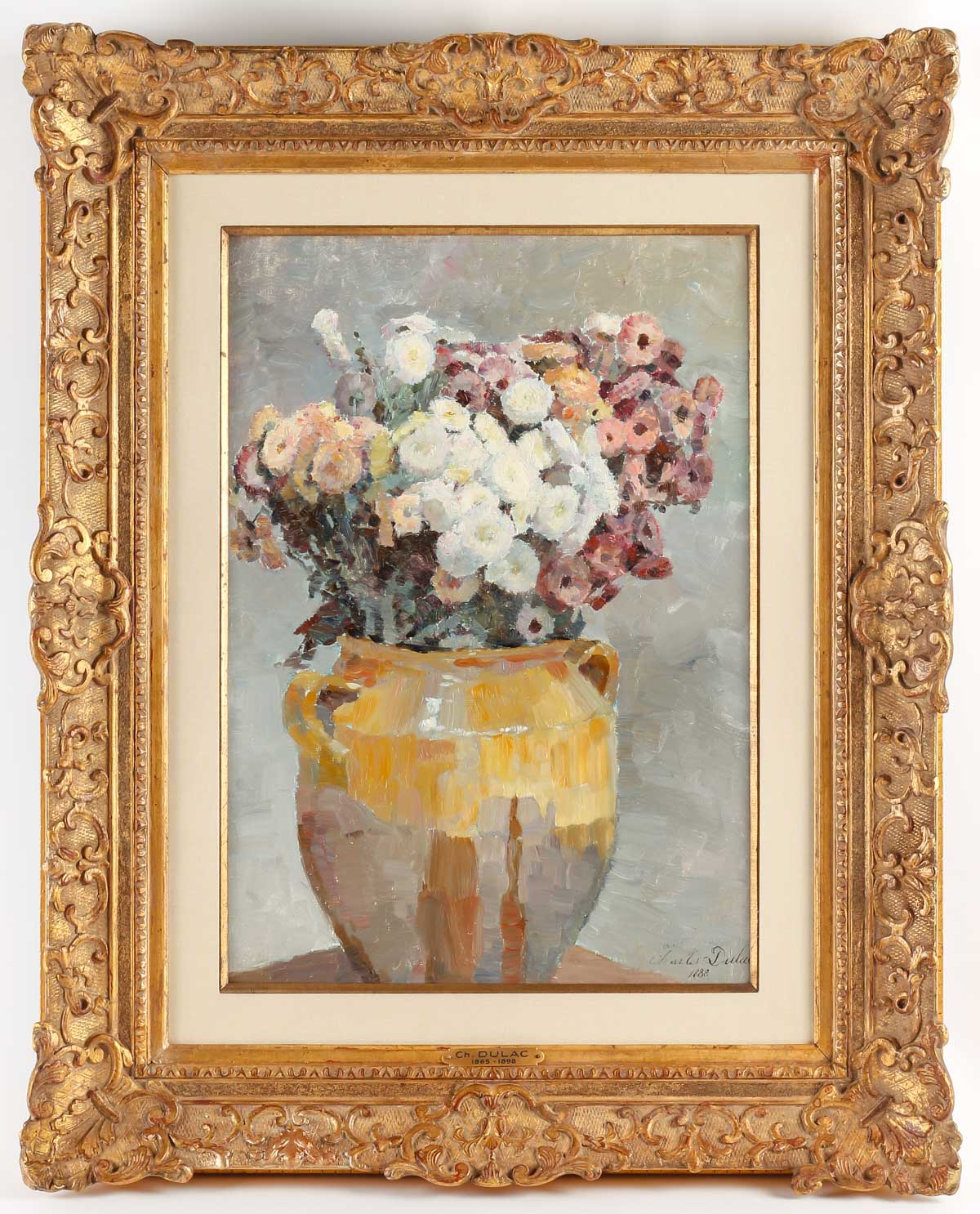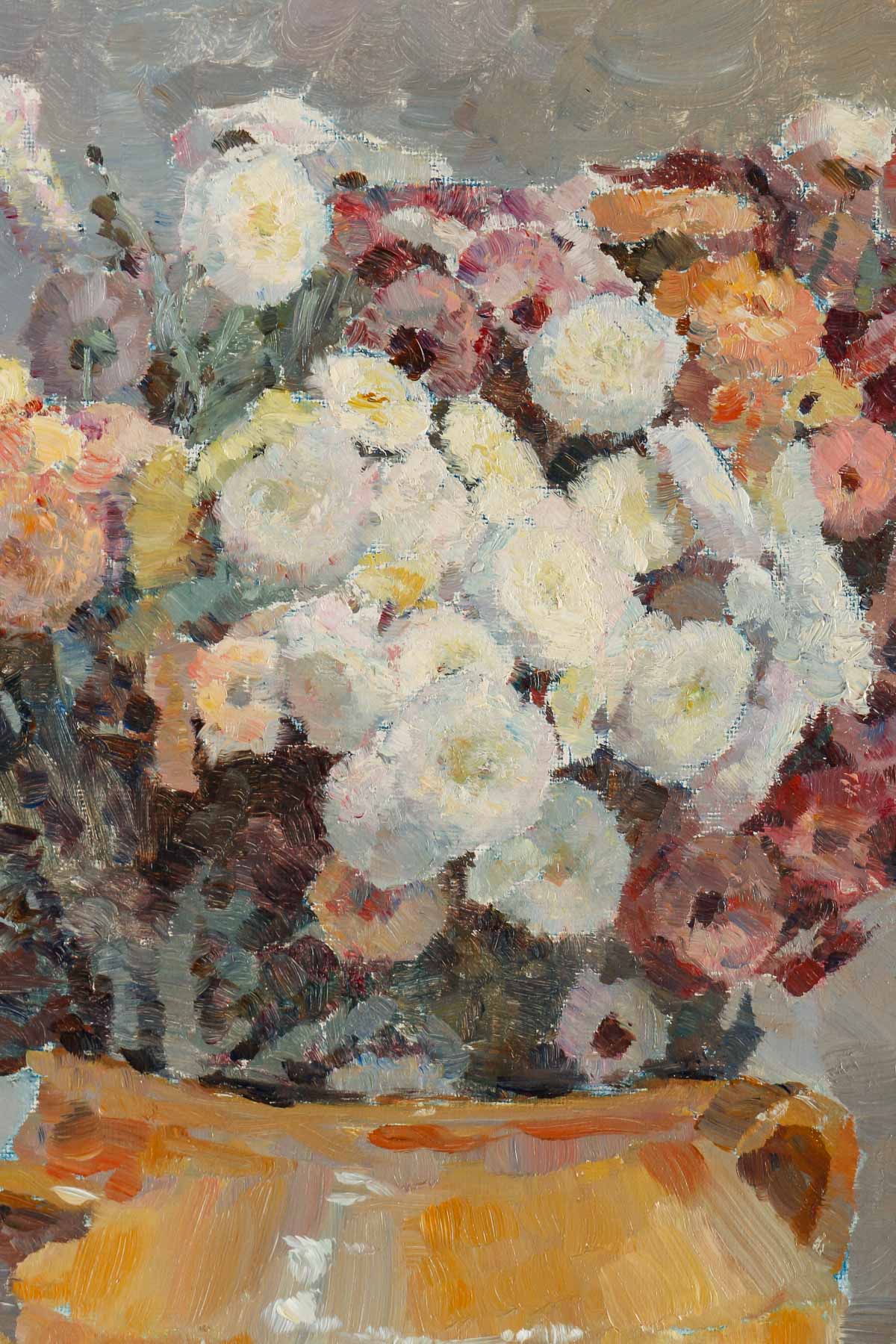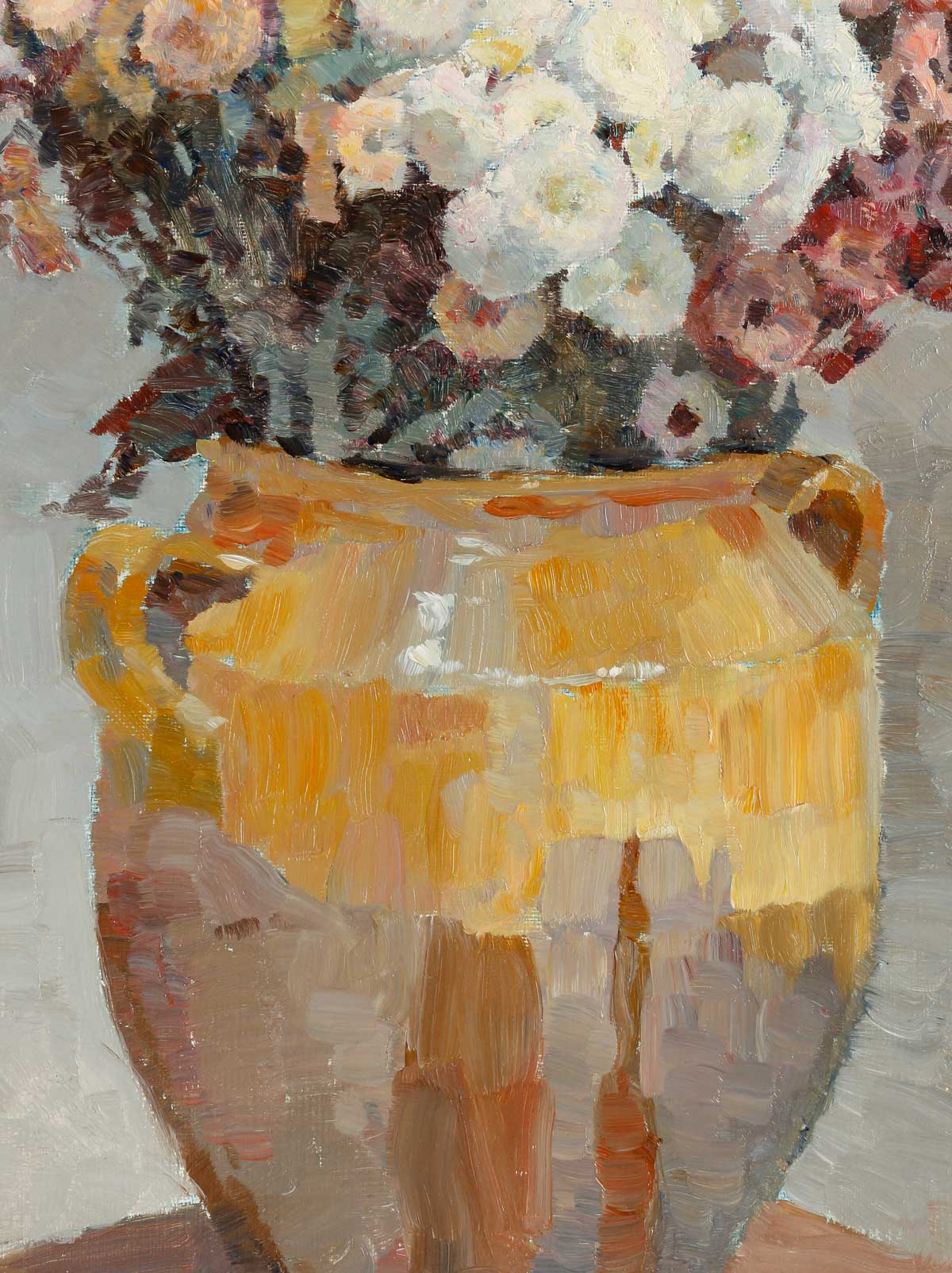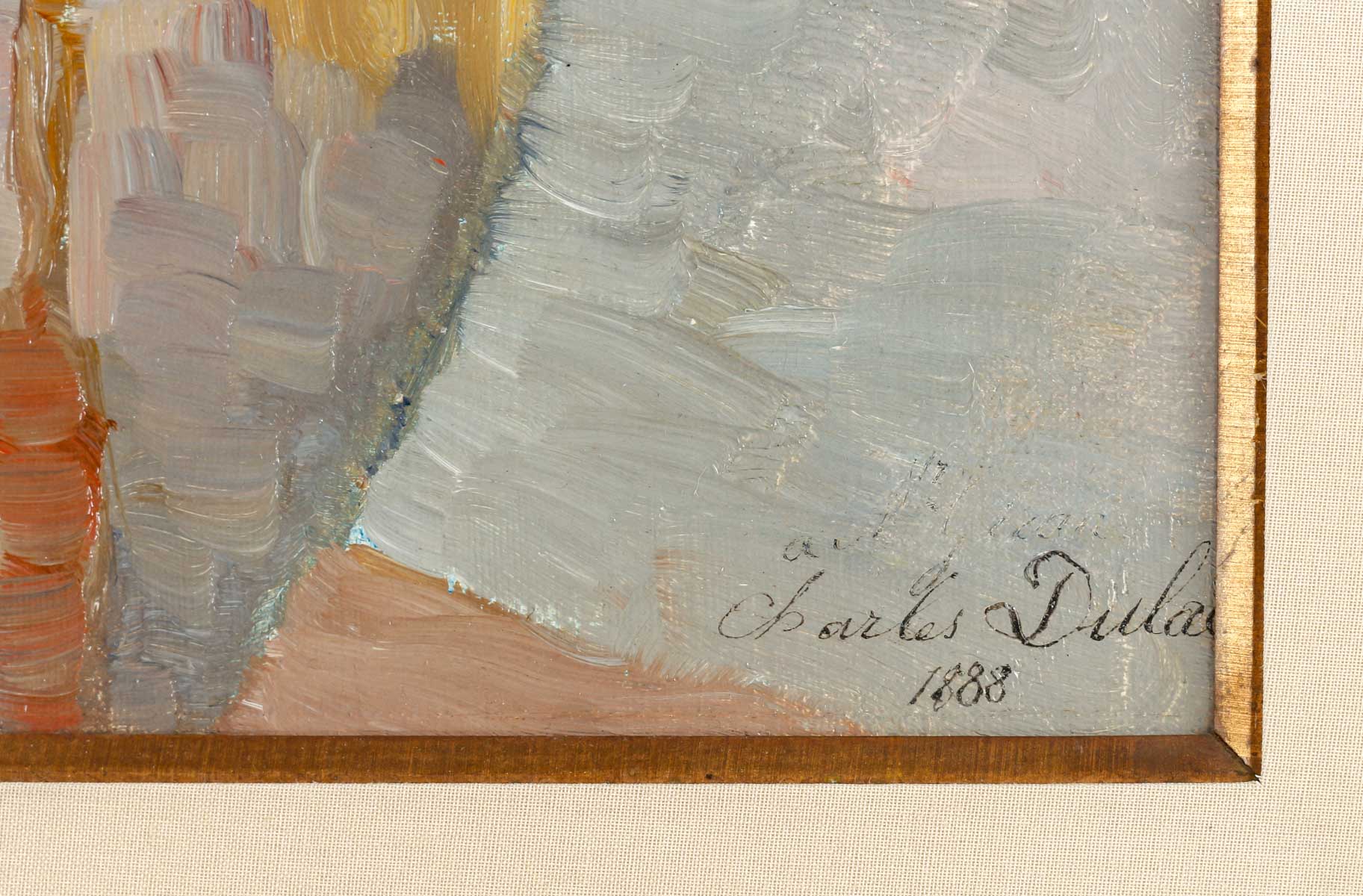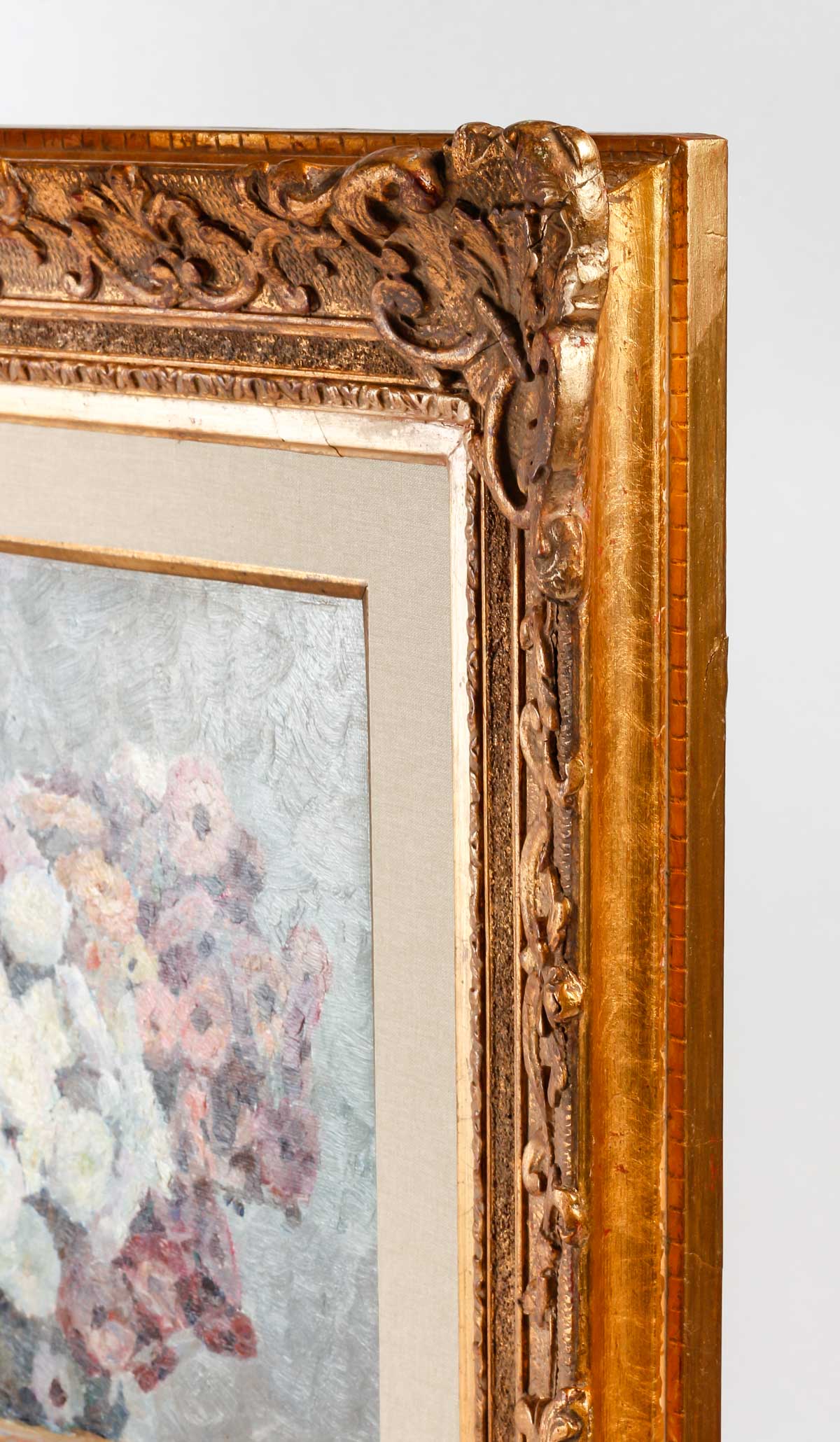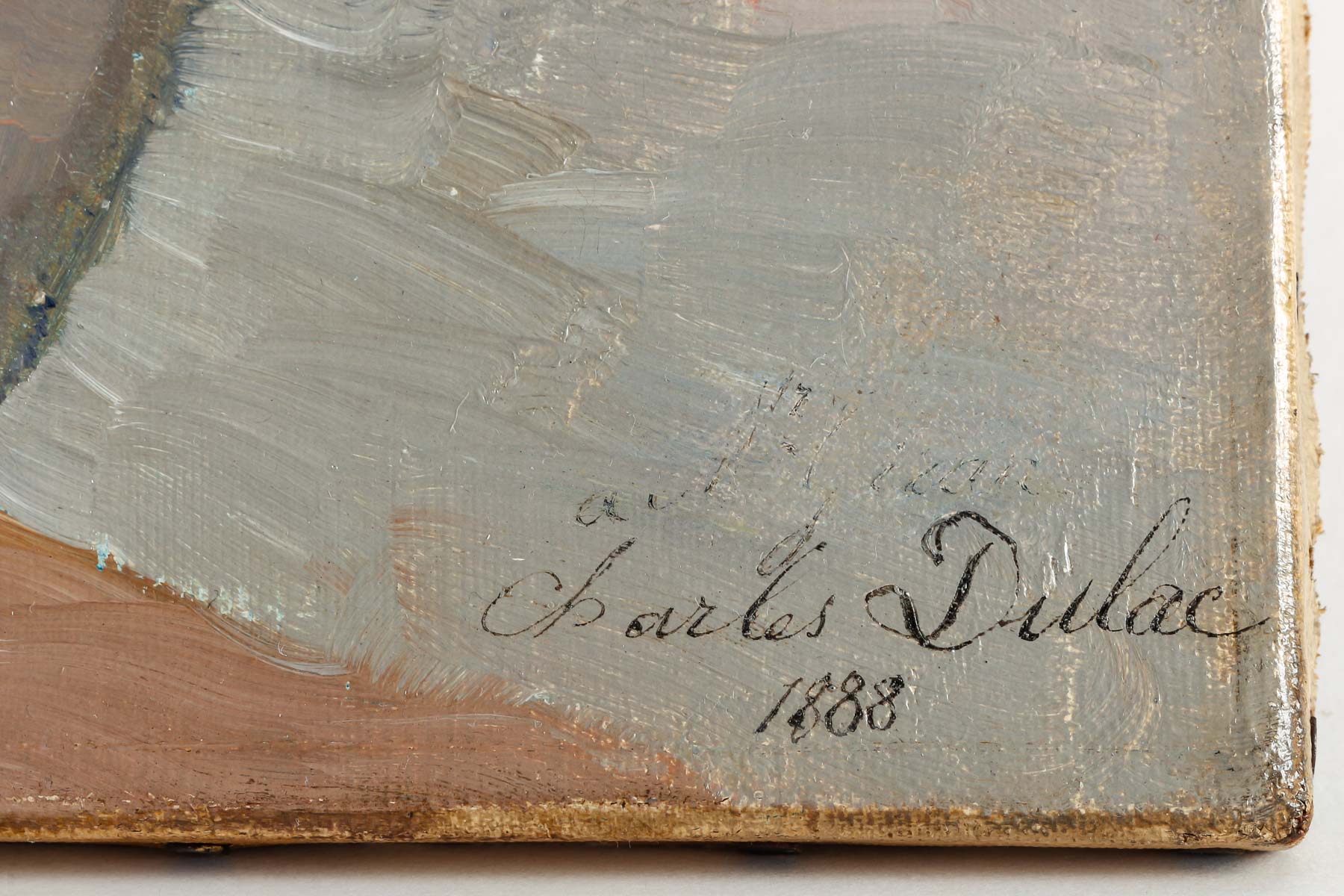Charles-Marie DULAC (1866-1898)
A bouquet of chrysanthemums from 1888 by Charles Marie Dulac, with its modern composition and sober, refined palette. A simple, timeless painting imbued with great sensitivity.
Oil on canvas
Signed and dated 1888 lower right
Dimensions: 46 x 33 cm
With frame: 68 x 55 cm
Price: €13,000
A modern layout and a varied touch.
Charles-Marie Dulac presents a bouquet of chrysanthemums, a flower symbolizing happiness, honesty, loyalty and friendship.
The composition is simple and the framing bold. The flowers and vase take up all the space, sharing the canvas equally. The painter takes advantage of the size of the varnished vase to express his material effects. He used vigorous, sculptural brushstrokes to capture the effects of light, while flowers were treated in an impressionistic manner.
A sober, refined and harmonious palette
Uncluttered and simple
Biography
A precocious painter who died prematurely, Charles Dulac, born in the 11th arrondissement of Paris from a Parisian merchant father and a mother of Alsatian origin, chose to be an artist in his own right. Far from academicism, impressionism or realism, Charles Marie Dulac is one of those artists who want to keep the focus on good painting and drawing technique, but believe that art should express a sensitivity, a vision of the world.
He started his apprenticeship with an interior decorator, then with a wallpaper company, and finally as a set painter at Jean-Baptiste Lavastre’s studio. He then worked at the Paris Opera and in various theaters.
But he suffered from lead poisoning due to the use of ceruse during his years as a decorator. He underwent a profound mystical crisis at the age of 24, and his career as an artist was transformed. He had several opportunities to stay at the Pierre-qui-Vire monastery near Vézelay.
From 1896-1897, he stopped exhibiting and traveled to Italy, cultivating his passion for primitive Italian art and treating himself to Mediterranean warmth. He then painted numerous small canvases depicting views of Assisi, Ravenna, Florence, Fiesole… which he sent to friends and family to pay for his trip.
Huysmans paid him a vibrant tribute.
Charles Dulac is represented in public collections in France, the United States, the United Kingdom, Canada and New Zealand, among others.
Museums
• In Paris :
– In France
– International
-Canada . Montreal, Musée des Beaux-Arts.
-United Kingdom . Glasgow, National Gallery of Scotland.
-New Zealand .Auckland, Auckland Art Museum


